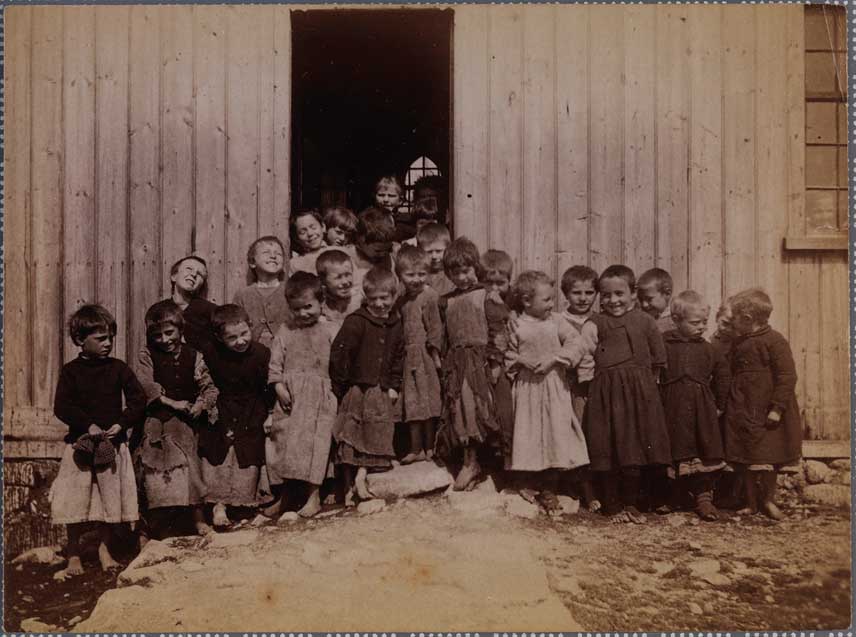Kindred Lines
Published in Features, Issue 1 (January/February 2016), Volume 24Irish Schools’ Registers
By Fiona Fitzsimons
The Irish Schools’ Registers are deposited in the National Archives of Ireland. (These are separate and distinct from the National School Registers [ED/2] 1832–1963, which are essentially minute books of proceedings relating to individual schools and don’t record children’s names.) The earliest registers date from the 1840s, although the greater number date from between the 1860s and the early 1920s. The individual schools are from the 26 counties of the Irish Republic.
The registers provide rich detail on pupils’ family background: name; age (sometimes given in years and months); religion; home address; parents’ ‘occupation or means of living’; date of entrance; and the school name and parish. Many records contain additional information, including the name of a previous school attended; the number of days’ attendance in the school year; the date when pupils may have left the school, and frequently why they left; and, in some instances, the dates when pupils were readmitted to school. For example, between September 1845 and November 1846 young Michael Geraghty (13), the son of a carrier (haulier) in Mount Prospect, was taken out of Rathangan NS to work. In late 1846 Michael rejoined the school and finally left in June 1847, with his younger brother Christy (11), when the Geraghtys emigrated to the United States. On 22 August 1909 we find Maurice O’Sullivan (6) registered in the school on Great Blasket Island, having previously attended the Union (workhouse) School in Dingle. On-line access to this level of detail will encourage future biographers and historians to correct small details.
In September 2015 the greater part of Ireland’s school registers was published on-line (www.findmypast.com), allowing historians to ‘data-mine’ these records and gain a clearer perspective of who is documented. More than half of all pupils in these registers are non-Catholic. This one fact tells us that these children and young people are from communities in decline: southern Irish Protestants and isolated rural communities—Durrus in west Cork, for example, and the island com-munities of the Blaskets, Gola and Haulbowline.
The pupils documented in the registers are from all faiths and none. The evidence found provides a wider perspective on the demographic changes among faith groups in late nineteenth- and early twentieth-century Ireland. For instance, we know that the pogroms of 1881–4 drove Jewish refugees eastwards from imperial Russia. The schools’ registers prove that Jewish immigration to Ireland only really picks up in the mid-1890s. In 1888 there were ten Jewish students enrolled in Irish schools; by 1898 annual enrolment had risen to 161 pupils.
The registers, used with other sources like the census, provide hard evidence on one of the most significant demographic changes in Ireland—the slow decline of the Protestant community, both in the countryside and in Dublin City—through the decline of the parish national schools. In 1882 we find Michael Casey (brother of the playwright Seán O’Casey) enrolling in St George’s parish NS.
Although the prognosis on this source is mostly positive, I must sound a caveat: the National Archives collection, although extensive, does not encompass all surviving school registers in Ireland. There are many registers and rolls held in county/ local authority archives and libraries.

Junior Infant boys outside a school in Connemara, 1892. (NLI)
Fiona Fitzsimons is a director of Eneclann, a Trinity College campus company, and of findmypast Ireland.
Further reading
http://www.nationalarchives.ie/PDF/RollRegDeptEducation.pdf
http://www.nationalarchives.ie/PDF/RollRegPrivateAccession.pdf
















